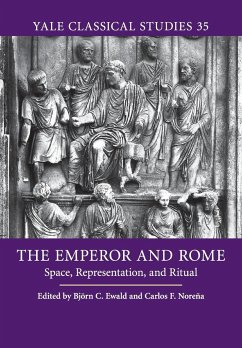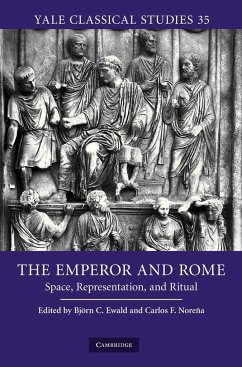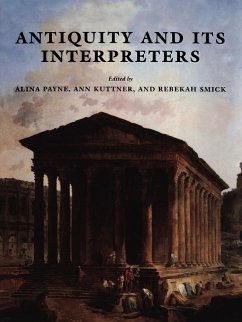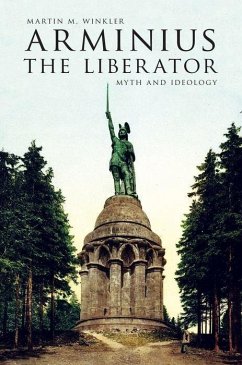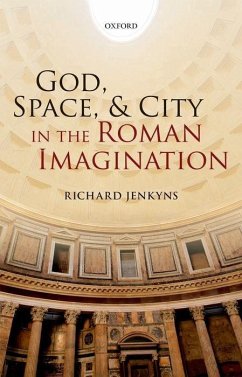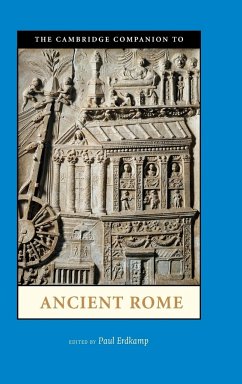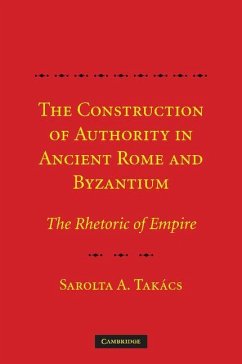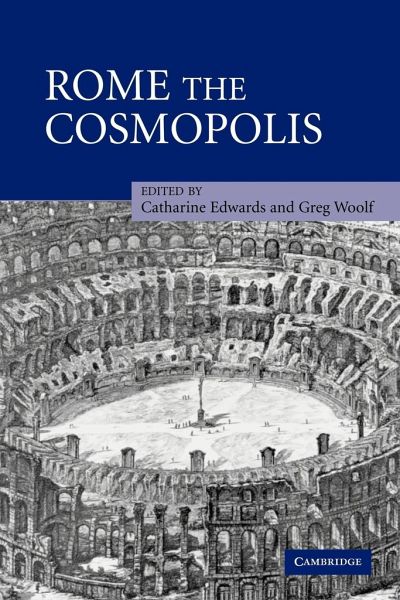
Rome the Cosmopolis
Versandkostenfrei!
Versandfertig in 1-2 Wochen
49,99 €
inkl. MwSt.

PAYBACK Punkte
25 °P sammeln!
A collection of essays exploring key aspects of the relationship between Rome and its empire.Rome stands today for an empire and for a city. The essays gathered in this volume explore some of the many ways in which the two were interwoven. Rome was fed, beautified and enriched by empire just as it was swollen, polluted, infected and occupied by it. Empire was paraded in the streets of Rome, and exhibited in the city's buildings. Empire also made the city ineradicably foreign, polyglot, an alien capital, and a focus for un-Roman activities. The city was where the Roman cosmos was most concentra...
A collection of essays exploring key aspects of the relationship between Rome and its empire.
Rome stands today for an empire and for a city. The essays gathered in this volume explore some of the many ways in which the two were interwoven. Rome was fed, beautified and enriched by empire just as it was swollen, polluted, infected and occupied by it. Empire was paraded in the streets of Rome, and exhibited in the city's buildings. Empire also made the city ineradicably foreign, polyglot, an alien capital, and a focus for un-Roman activities. The city was where the Roman cosmos was most concentrated, and so was most contested. Deploying a range of methodologies on materials ranging from Egyptian obelisks to human skeletal remains, via Christian art and Latin poetry, the contributors to this volume weave a series of pathways through the world-city, exploring the different kinds of centrality Rome had in the empire. The result is a startlingly original picture of both empire and city.
Review quote:
'Nine historians offer lively, original and consistently interesting papers - Rome the Cosmopolis gives us much that is new and memorable.' Times Literary Supplement
'- a rich and rewarding collection, which amply demonstrates that the recognition of the cosmopolitan nature of the city of Rome opens up the possibility of new literary, archaeological, historical, and artistic narratives of the city.' Journal of Roman Studies
Table of contents:
List of figures; List of contributors; Preface; List of abbreviations; 1. Cosmopolis: Rome as World City Catharine Edwards and Greg Woolf; 2. The triumph of the absurd: Roman street theatre Mary Beard; 3. Incorporating the alien: the art of conquest Catharine Edwards; 4. Inventing Christian Rome: the role of early Christian art Jas' Elsner; 5. Slavery and the growth of Rome: the transformation of Italy in the second and first centuries BCE Willem Jongman; 6. Rivalling Rome: Carthage Richard Miles; 7. Migration and the metropolis Neville Morley; 8. Germs for Rome Walter Scheidel; 9. Embracing Egypt Caroline Vout; 10. The City of Letters Greg Woolf; Bibliography; Index.
Rome stands today for an empire and for a city. The essays gathered in this volume explore some of the many ways in which the two were interwoven. Rome was fed, beautified and enriched by empire just as it was swollen, polluted, infected and occupied by it. Empire was paraded in the streets of Rome, and exhibited in the city's buildings. Empire also made the city ineradicably foreign, polyglot, an alien capital, and a focus for un-Roman activities. The city was where the Roman cosmos was most concentrated, and so was most contested. Deploying a range of methodologies on materials ranging from Egyptian obelisks to human skeletal remains, via Christian art and Latin poetry, the contributors to this volume weave a series of pathways through the world-city, exploring the different kinds of centrality Rome had in the empire. The result is a startlingly original picture of both empire and city.
Review quote:
'Nine historians offer lively, original and consistently interesting papers - Rome the Cosmopolis gives us much that is new and memorable.' Times Literary Supplement
'- a rich and rewarding collection, which amply demonstrates that the recognition of the cosmopolitan nature of the city of Rome opens up the possibility of new literary, archaeological, historical, and artistic narratives of the city.' Journal of Roman Studies
Table of contents:
List of figures; List of contributors; Preface; List of abbreviations; 1. Cosmopolis: Rome as World City Catharine Edwards and Greg Woolf; 2. The triumph of the absurd: Roman street theatre Mary Beard; 3. Incorporating the alien: the art of conquest Catharine Edwards; 4. Inventing Christian Rome: the role of early Christian art Jas' Elsner; 5. Slavery and the growth of Rome: the transformation of Italy in the second and first centuries BCE Willem Jongman; 6. Rivalling Rome: Carthage Richard Miles; 7. Migration and the metropolis Neville Morley; 8. Germs for Rome Walter Scheidel; 9. Embracing Egypt Caroline Vout; 10. The City of Letters Greg Woolf; Bibliography; Index.





